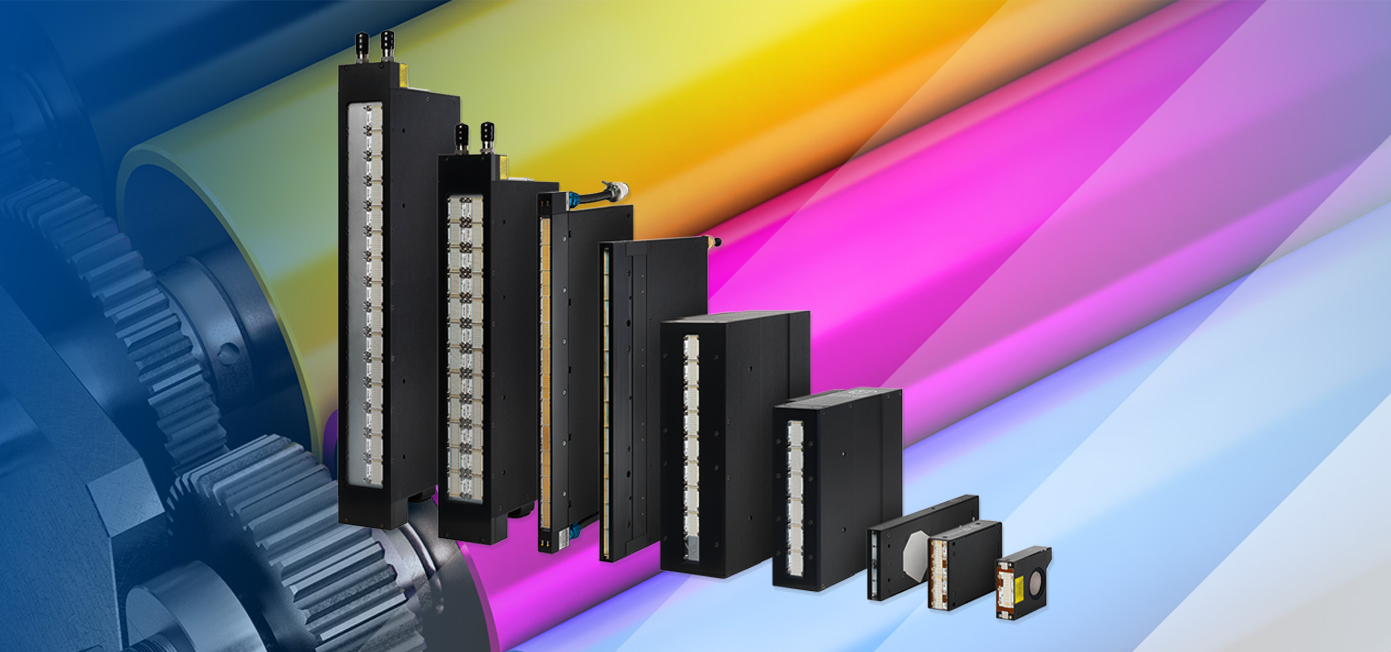In the fast-evolving landscape of industrial printing, the choice between water cooled and air cooled UV LED curing solutions poses a pivotal dilemma for OEMs, Integrators and machine builders.
This crucial decision reverberates through the heart of the production process, influencing efficiency, cost-effectiveness, and the overall performance of the printing system.
Performance Dynamics
Water cooled Advantage:
- Water cooled UV LED systems excel in dissipating heat efficiently, ensuring consistent and stable performance. This is particularly advantageous in production scenarios where the highest UV output is required, but maintaining a uniform UV output is critical.
Air cooled Advantage:
- Air cooled systems, on the other hand, are renowned for their simplicity and ease of integration. They eliminate the need for water circulation systems and are often preferred where simplicity and flexibility are of greater importance than the variability in output a changing ambient temperature brings.
Energy Efficiency
Water cooled Advantage:
- Water cooled systems often boast higher energy outputs, leveraging the cooling power of water to dissipate heat more effectively. This can translate into higher production speeds offering long-term cost savings and reduced maintenance.
Air cooled Advantage
- Air cooled systems are known for their energy efficiency, particularly in situations where maintaining a lower overall power consumption is a priority.
Environmental Considerations
Water cooled Advantage:
- While water cooled systems are generally more energy-efficient they require additional resources for water circulation and cooling.
Air cooled Advantage:
- Air cooled systems, being simpler in design and often have a smaller environmental footprint.
Maintenance and Longevity
Water cooled Advantage:
- Water cooled systems, with their effective heat dissipation mechanisms, maintain lower and more controlled parameters extending the effective life of the LED head.
Air cooled Advantage:
- Air cooled systems, though simpler, may require more frequent planned maintenance checks to ensure optimal However, the straightforward design often makes troubleshooting and repairs more accessible.
Adaptability to Production Environments
Water cooled Advantage:
- Water cooled systems are well-suited for demanding production environments, such as ‘Clean Rooms’ where consistent performance under high workloads is crucial and not affecting the local environmental conditions is also critical.
Air cooled Advantage:
- Air cooled systems shine in environments that prioritize simplicity, flexibility, and quick integration.
In the intricate dance of choosing between water cooled and air cooled UV LED curing solutions, there’s no one-size-fits-all answer – See our article ‘Beyond One-Size-Fits-All: The Need for a Tailored UV LED Curing System’.
The decision hinges on the specific needs, priorities, and constraints of the industrial print setting. As technology continues to advance, both solutions will undoubtedly play vital roles in shaping the future of UV LED curing within the industrial printing industry.
The key lies in a nuanced understanding of the production environment and a strategic alignment of the chosen solution with the overarching goals of efficiency, sustainability, and excellence in print quality.



